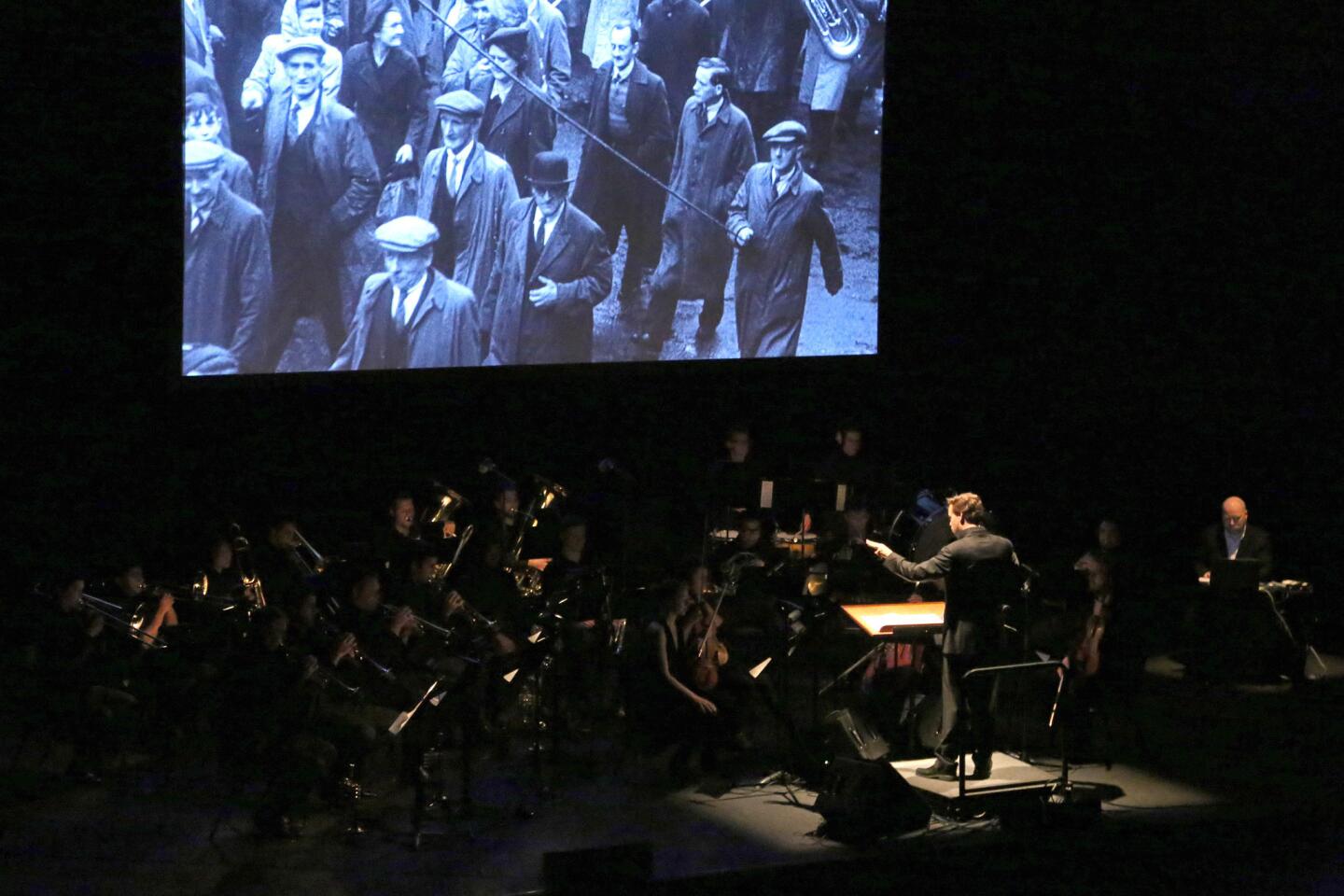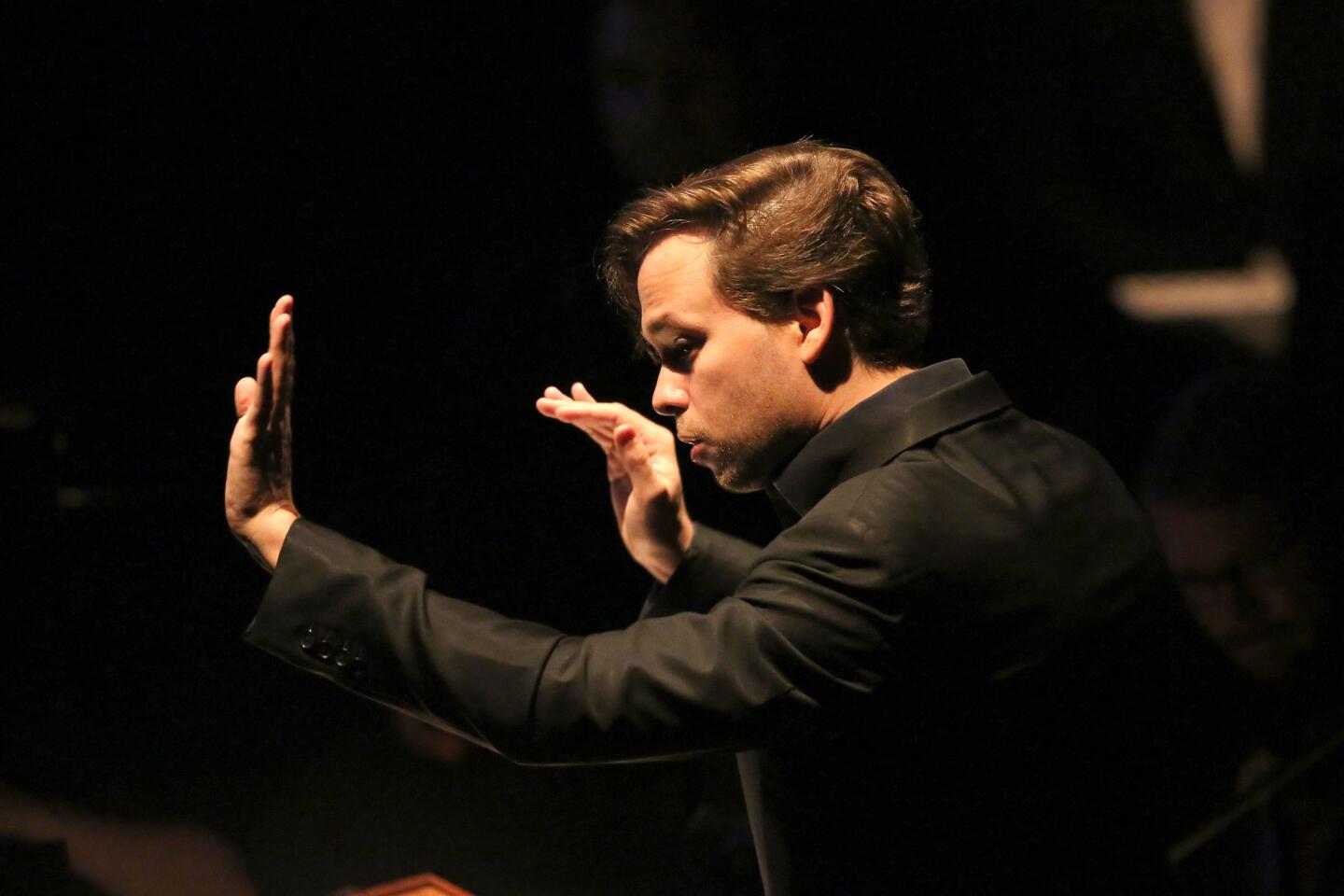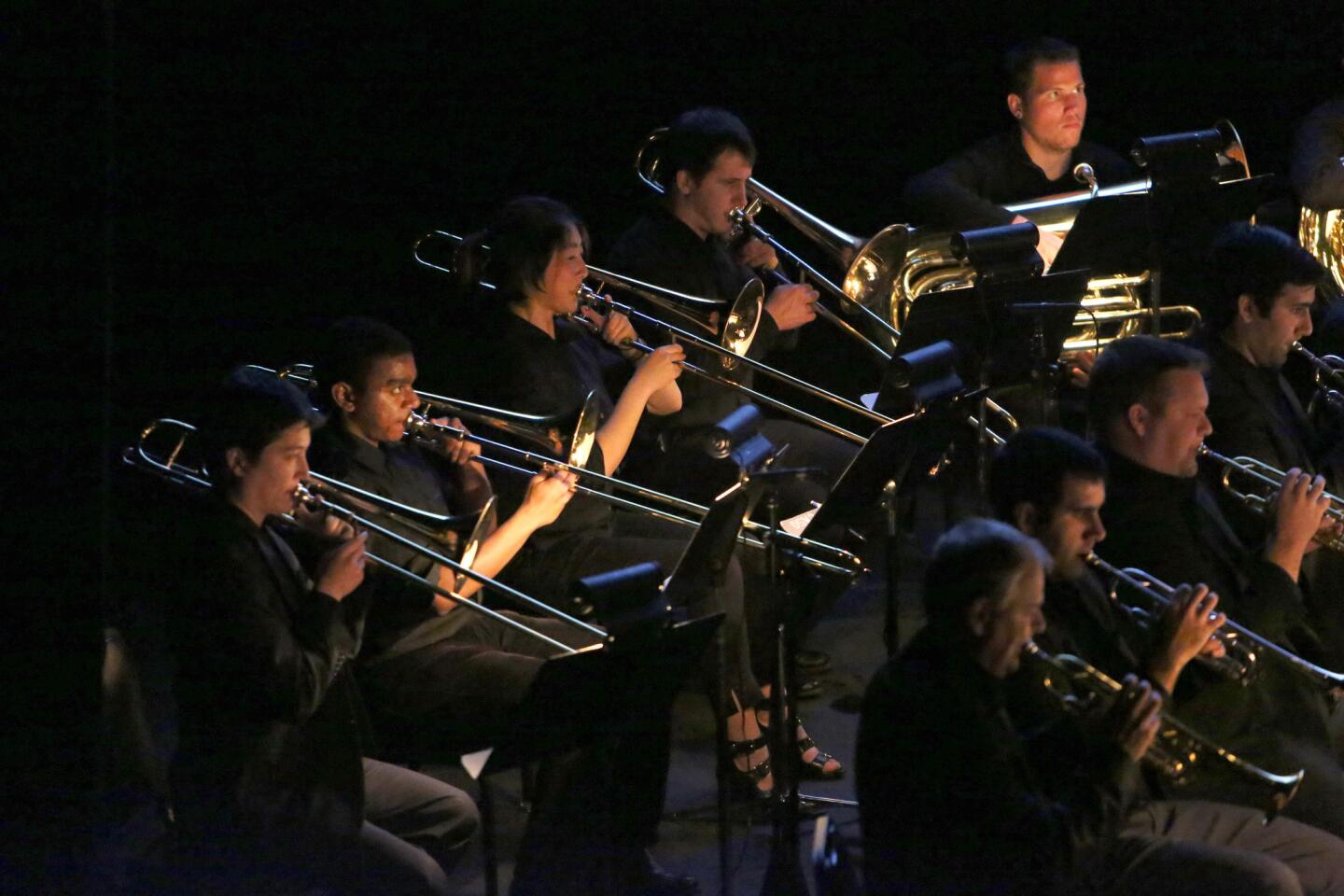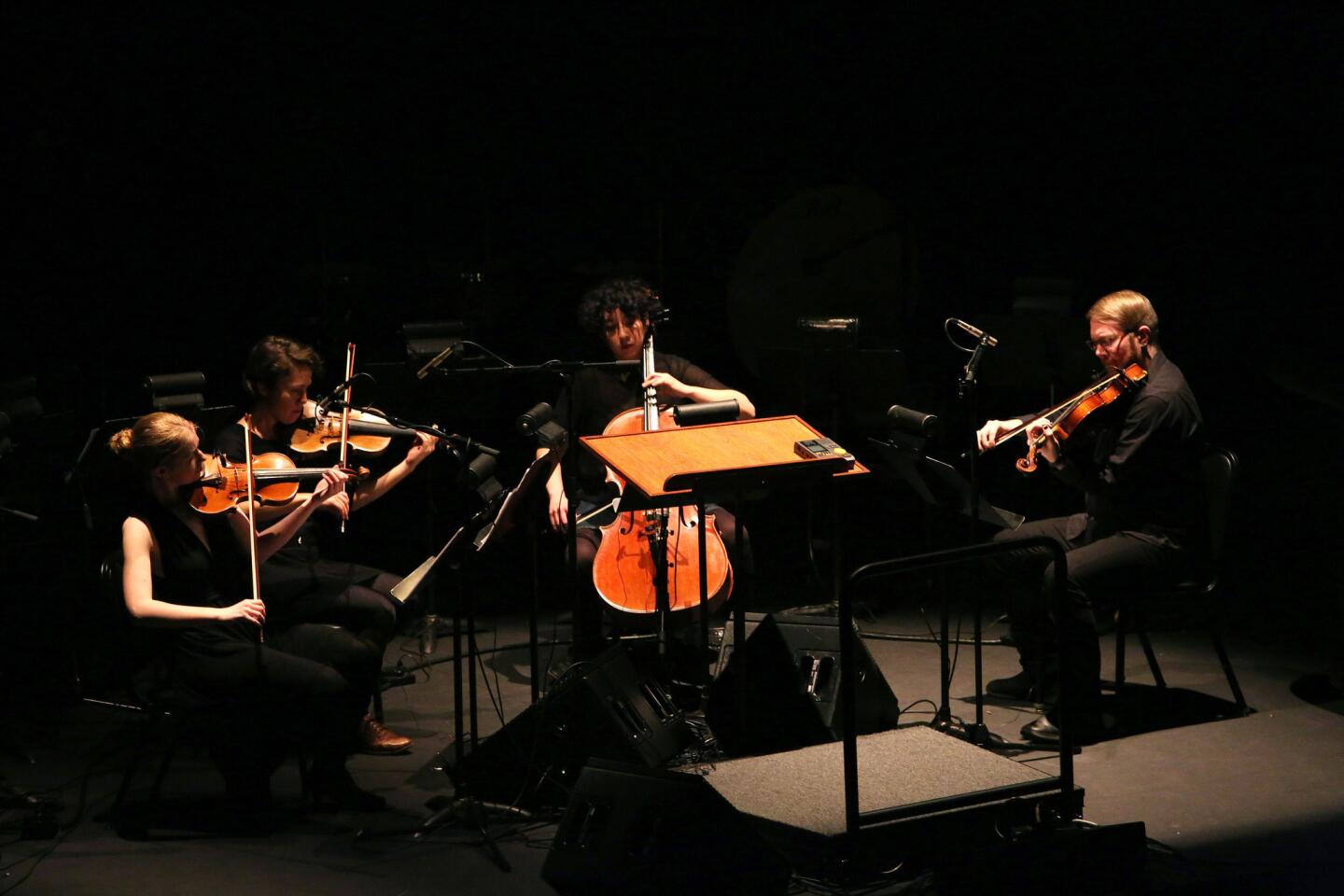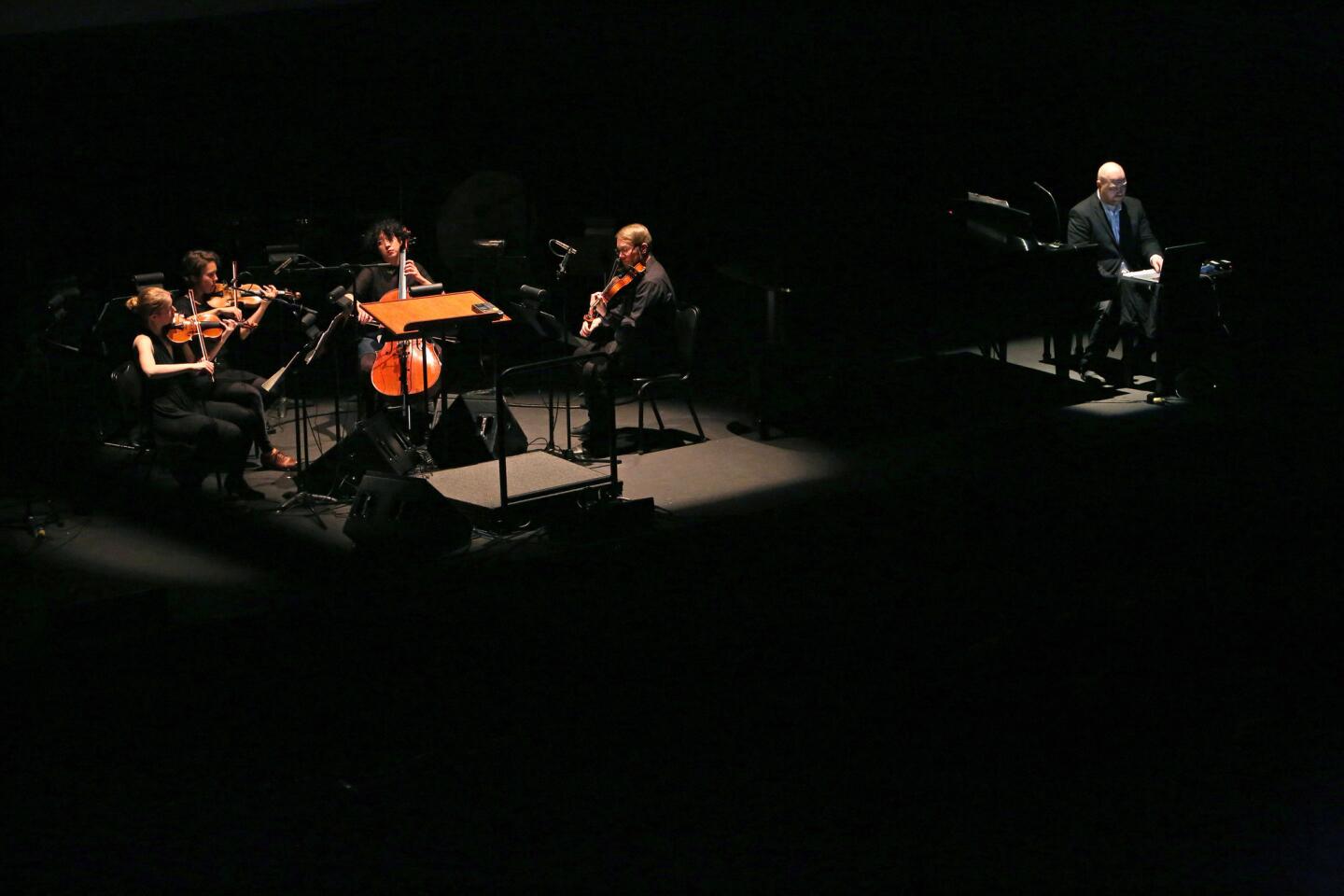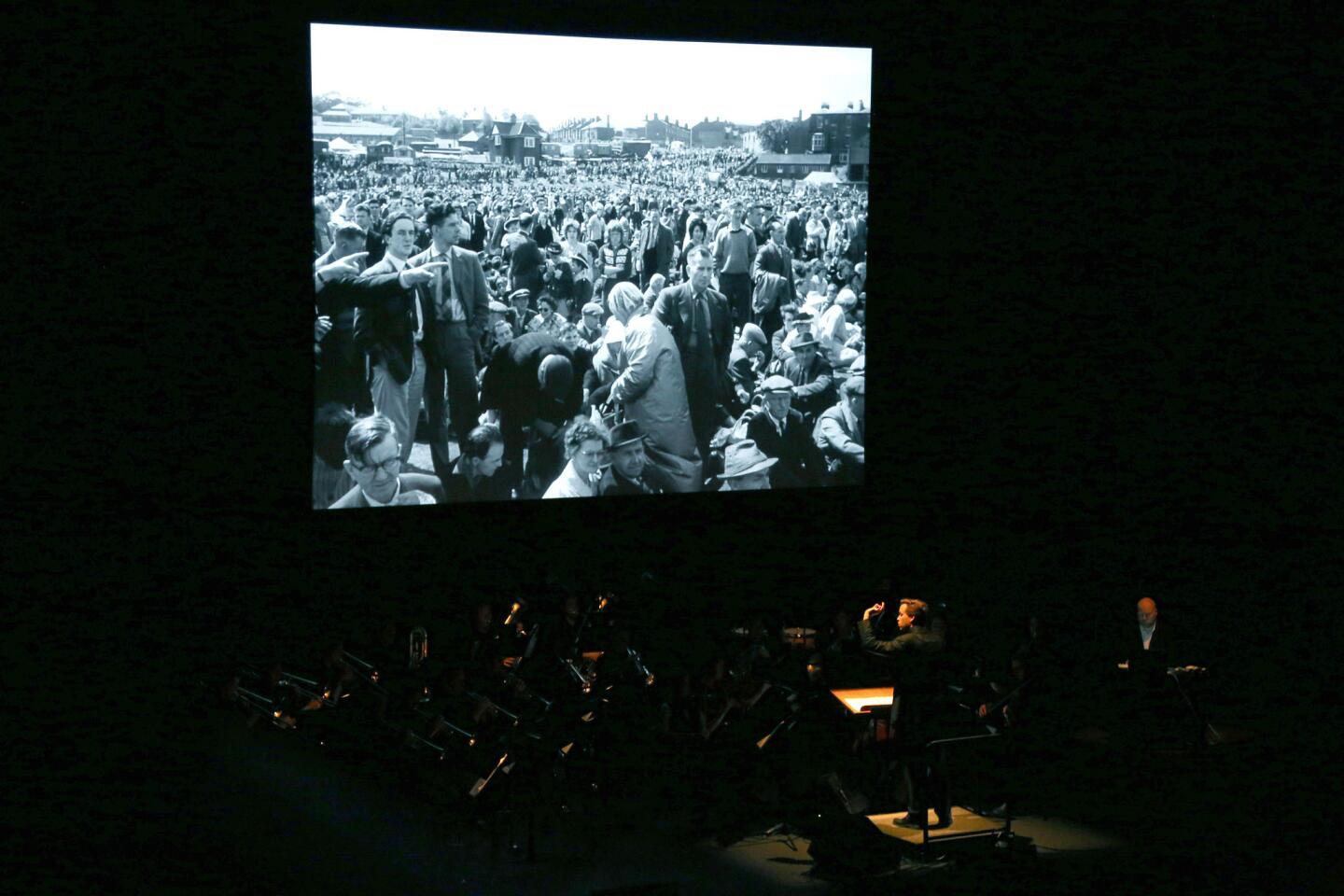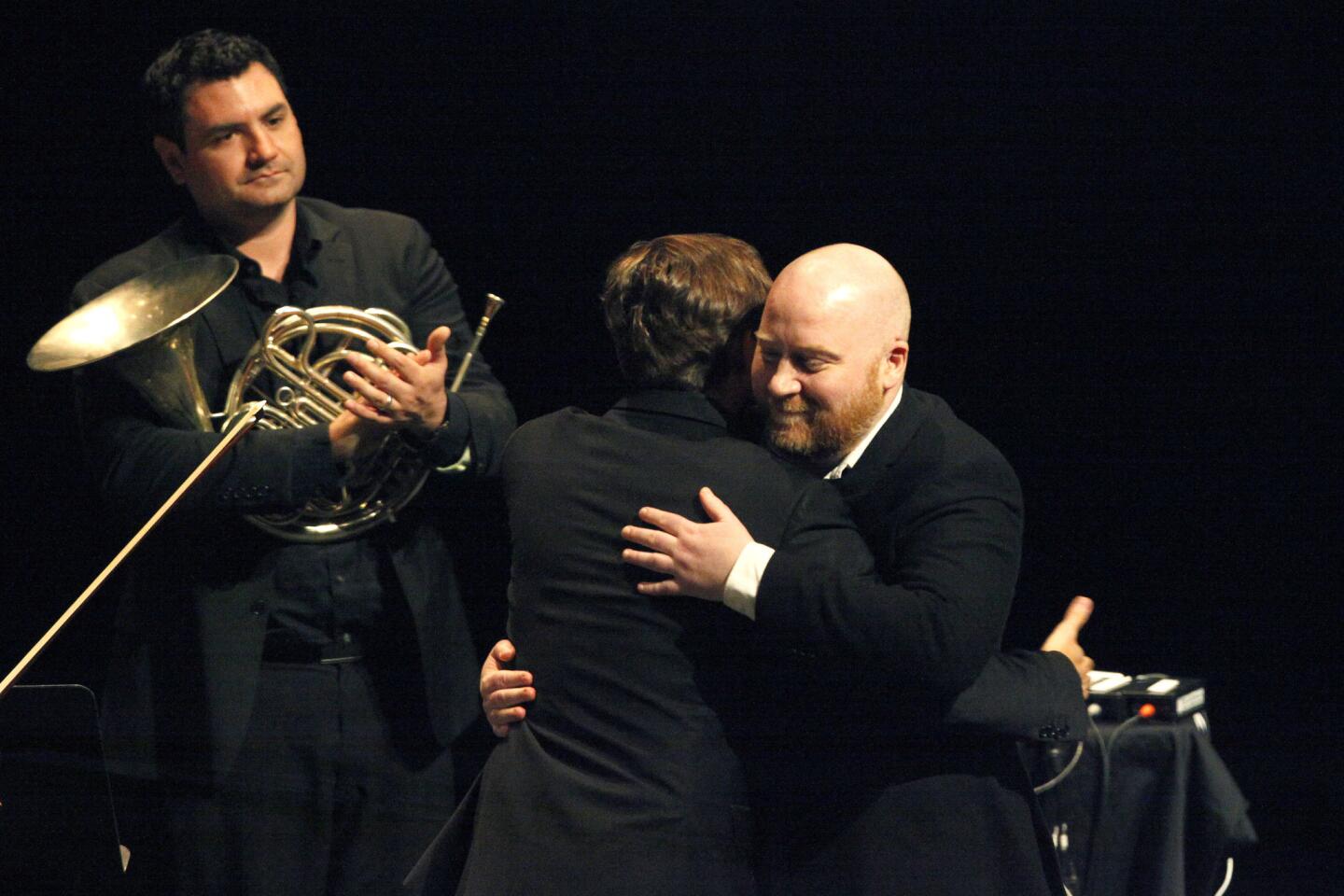Review: The film ‘Miners’ Hymns’ and its evocative, live score
Derived from found footage, Bill Morrison’s films are odes to snubbed celluloid.
Whether he slices the surviving moldy fragments of a lost silent film, as in “Decasia,” or crafts a dirge to the 1927 flooding of the Mississippi River with old documentary material, as in the recent “The Great Flood,” Morrison savors decayed film stock for its ghostly beauty. Lost worlds are not created or evoked; they are discovered and recovered.
What makes Morrison a great filmmaker, though, is not merely his application of restoration hardware but his brilliant exercise of symphonic software. His footage is silent. His films are not. He has a remarkably astute sense of music. The only major directors with a comparably original ear are probably Jean-Luc Godard and Peter Greenaway.
PHOTOS: ‘The Miners’ Hymns’ score performed
Most remarkable of all is that Morrison’s films are at their most cinematic when treated as performance art, with the music performed live, as it was Friday night in Royce Hall for “The Miners’ Hymns,” presented by UCLA’s Center for the Art of Performance.
The score for the 52-minute survey of coal workers in the pits of County Durham in northeast England last century is by Jóhann Jóhannsson. On hand to play it were a string quartet from a new music ensemble that has a big presence on the Brooklyn scene, a brass band of UCLA students and the Icelandic composer tapping away on his laptop to produce cavernous drones.
“Miners’ Hymns” begins and ends with faded, mundane aerial color footage of dreary plain Durham after the mines were gone. Jóhannsson’s score promises, however, more, first with a rising series of organ chords and then soft waves of brass producing an audible aura of the lives that made the mines and the town hum many years ago.
The dead are summoned, and they reappear in old black-and-white clips of Durham’s high streets and deep mines. The years must be guessed. Some of the footage seems to be from early last century, some from, maybe, the ‘60s. Shoppers live normal lives. Miners do not. They enter the underworld in the morning carrying their lunches like soldiers off to battle. They emerge at day’s end blackened with coal dust that cannot hide hardened expressions. They repeat this, daily, for a lifetime, and one typically cut short by muddied lungs.
CRITICS’ PICKS: What to watch, where to go, what to eat
And yet “Miners’ Hymns” is almost celebratory. Jóhannsson begins each section for the brass band with elemental materials, simple melodic phrases and repeated bland chords. But these materials grow into uncertain structures. Pitches sour. The sonic effect, enhanced by the electronics and the texture of the string quartet (when not overwhelmed by the brass, which was most of the time), is that of queasy strength.
At his least interesting, Jóhannsson produced ominous sound effects on his keyboard, the kind used in Hollywood thrillers to create a generalized atmosphere of dread. But at his most interesting, the composer added an aura of an era past that made the film itself come to three-dimensional life, revealing the great punishing beauty of mines.
The idea of a student brass band that is not top conservatory level can be a little scary. The UCLA Brass Ensemble struggled but rose to the challenge.
The string quartet was derived from the American Contemporary Music Ensemble, and it featured a couple of stars in the youthful New York new music scene.
In fact, two players happen to be emerging major composers in their own right: violinist Caroline Shaw (who won the Pulitzer Prize for composition last year) and violist Caleb Burhans. The other members were violinist Laura Lutzke and cellist Clarice Jensen.
PHOTOS: Arts and culture in pictures by The Times
Ryan McAdams conducted with slightly more showy enthusiasm than the players may have needed and certainly more than a film audience did. It would have helped if he not stood on a podium with his head in the projected frame.
The quartet got a chance to show itself off with seven short pieces by Jóhannsson to begin the evening, the composer accompanying either on laptop or piano. Two came from “Prisoners,” the recent thriller he scored. Others were from his CDs. Here mood overtook substance and, when Jóhannsson slid over to the grand piano, he seemed to be overtaken by a simplistic new-age spirit.
But Jóhannsson tapped into a more timeless music for “Miners’ Hymns,” giving Durham an unforgettable mystical aura it may never have had.
More to Read
The biggest entertainment stories
Get our big stories about Hollywood, film, television, music, arts, culture and more right in your inbox as soon as they publish.
You may occasionally receive promotional content from the Los Angeles Times.
